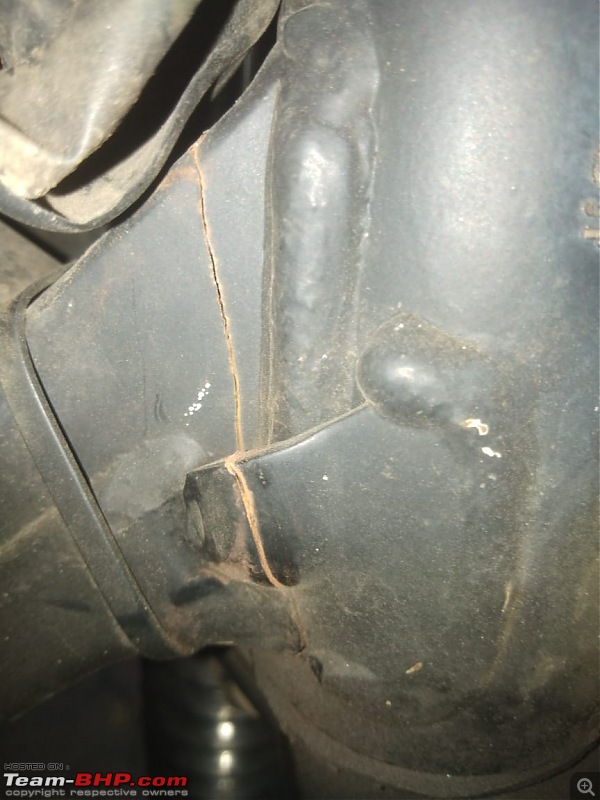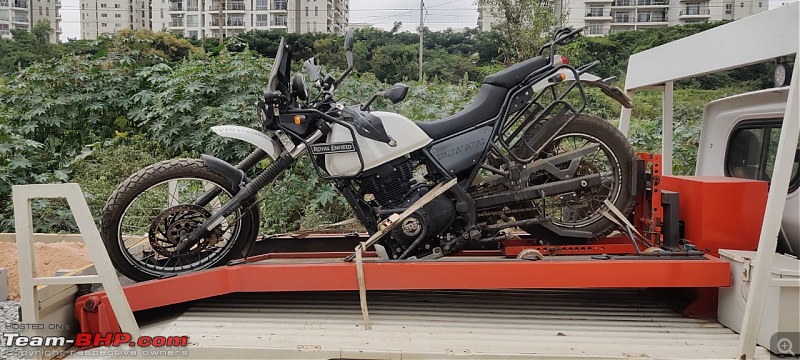Quote:
Originally Posted by VijayAnand1  ... I sincerely hope RE instead of dashing around with new colors for the Himalayan, should've proactively worked around the chassis issue and solved it for good...
VJ |
I'm sure they have fixed this. It's a 5-yr old BS4 model, which had the problem. I'm not seeing the recent BS6 models suffering any of these issues. They got considerably heavier, though.
The Himalayan is an amazing product for its time and for its price. Only brought down by a couple of engineering issues but mostly quality issues --- quality of raw material/parts and QC. Once it entered serial production, there was less room to go back to the drawing board, re-engineer the frame to better manage the pressure points while staying around 180kg curb weight, and test it extensively. Jugaad was probably the only way out. It meant adding more metal to strengthen the pressure points. It shows in the 200kg curb weight of the BS6 model.
I have spoken with one of Himalayan's test riders and listened to the kind of riding they had done with the pre-production model. If the stories he shared were true --- and I believe they were --- the hand-made Himalayan they tested certainly was capable of a lot more than RE ever advertised.
-----------
Off-Topic:
I was in the market for a tall bike in 2016 and if I were okay with a heavier bike, I'd have found even a frame replacement every 4 years or so a reasonable price to pay for its capabilities in other areas. It is that good.
I have ridden most RE motorcycles - B350, B500FI, TB350, C500FI, Himalayan and Hunter. The Himalayan connected with me and spoke to me like very few motorcycles ever have in my life. The Honda Navi, Gixxer, and Impulse are the only other motorcycles, which matched the Himalayan's connection.
Not that the poor workmanship is excusable, but there was nothing else like it until recently. Although I haven't ridden the 390Adv and Yezdi Adv, if I were okay with the weight, I'd still pick the Himalayan over the Yezdi and 390.
I guess it all boils down to the weight. What takes off had to land. And if it's light, it's a lot easier on the frame, suspension, wheels, and rider.
PS: Hunter was the one with which I felt the least connection. It's another great product and I'll recommend it to people in my circle if their needs match with it. But it's not for me.
That's why it's critical to test ride a motorcycle before buying. A test drive for a car is not as critical as the delta or range in the 'feel' of cars is not as huge as it is in the case of motorcycles.
Quote:
Originally Posted by tarmacnaut  The chassis of the Interceptor/Continental GT, which come with 18 inch wheel, have also have broken. Below are some of the reports from actual owners. So, 21 inch wheels being the cause is just working against recommending RE, as it was RE that launched the bike with 21 inch wheel and the owner did not swap. Basically RE doesn't have the engineering prowess to design a proper frame for the bike and is still a more of a lifestyle brand.
Scram is a fairly new model compared to Himalayan, there is high chances the issue might occur after few years of riding, as the issue has occurred in many Himalayans after few years of ownership.
The decades old push rod Enfield bullets are running fine without any frame breakage, the so called new platform(s) actually went several steps back with this basic issue.
|
The number of people riding modern REs >> number of people riding push rod REs
It's also worth noting that the cumulative number of miles modern REs are accumulating >> miles of the push-rod REs
currently in working condition.
So, old REs are naturally less likely to suffer catastrophic problems than modern REs.
The tech-friendliness of modern RE riders facing problems is >> tech friendliness of push-rod RE riders. So, old RE riders don't bring them up on forums like this as often as modern RE riders.
It's also highly likely that the people owning push-road REs have come to expect problems with their motorcycles. They know that they can't expect RE to fix it for them with a turnaround time comparable to that of a modern RE.
So, just because we don't hear about push-rod RE problems doesn't mean that they don't have problems. If they were indeed that good, then we'd see them more often on our roads munching miles. But the people who have them keep them around because of emotional connection with the older REs. They often love the machine so much that they're willing to look past the problem.
Point is, modern REs are objectively more reliable.
 (20)
Thanks
(20)
Thanks
 (10)
Thanks
(10)
Thanks
 (4)
Thanks
(4)
Thanks
 (13)
Thanks
(13)
Thanks
 (14)
Thanks
(14)
Thanks
 (4)
Thanks
(4)
Thanks
 (2)
Thanks
(2)
Thanks
 (18)
Thanks
(18)
Thanks
 (6)
Thanks
(6)
Thanks
 (9)
Thanks
(9)
Thanks
 (4)
Thanks
(4)
Thanks
 (3)
Thanks
(3)
Thanks
 (2)
Thanks
(2)
Thanks
 (5)
Thanks
(5)
Thanks















